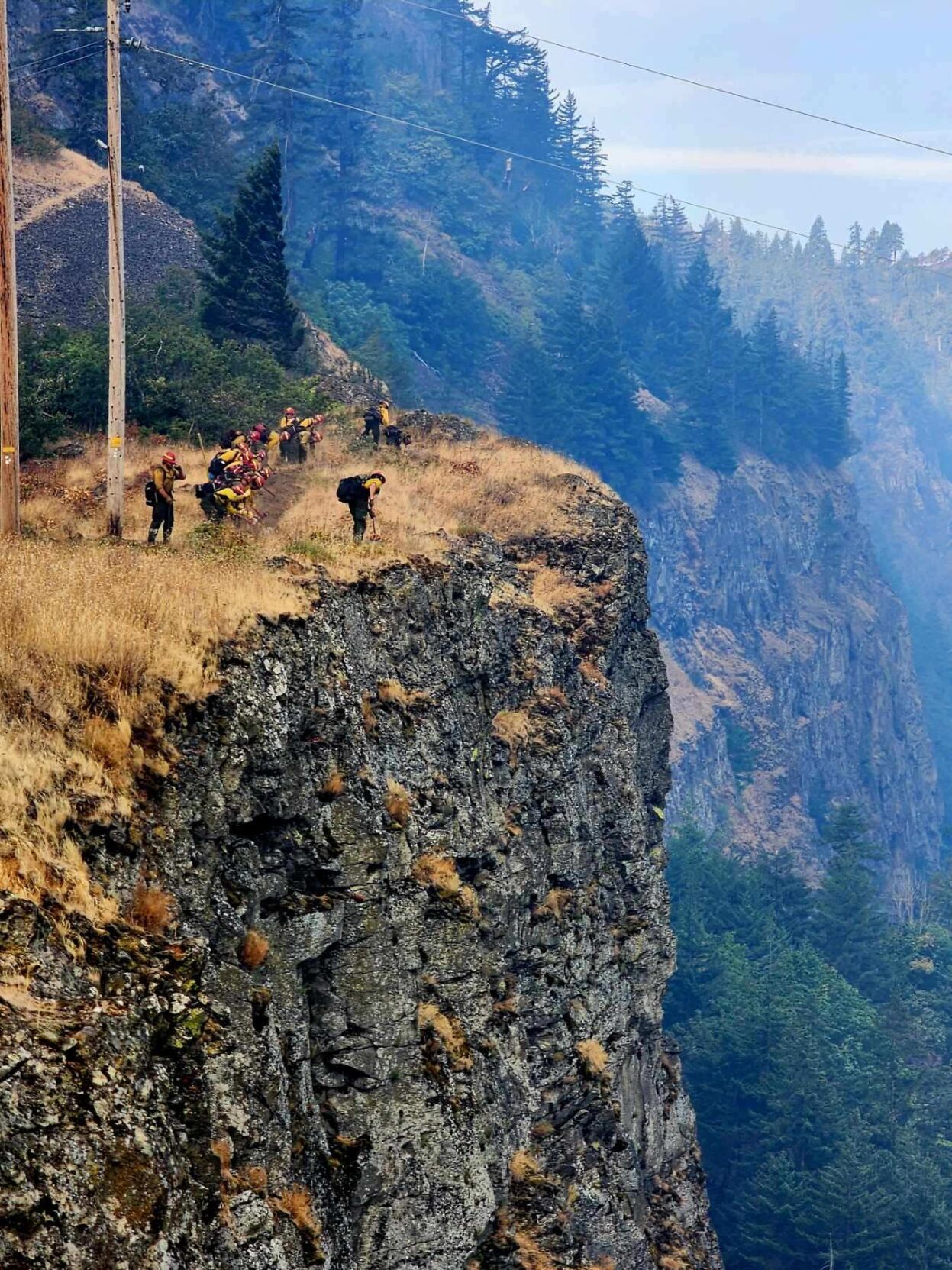Wasco County has a higher wildfire risk than 95% of other counties in the country.
So how did this region in particular get to such a high fire risk?
Kayla Bordelon, the Oregon State University extension service regional fire specialist for the Willamette Valley and Columbia Gorge, explained.
It’s complex. The Gorge has a dryer east and wetter west, each with different ecosystems. But all of the Columbia Gorge ecosystems are “fire adapted,” meaning they have historically seen significant wildfire.
In fact, historically, fire used to happen a lot more often than it does now. But historical fires, often started intentionally by indigenous land stewards for land management, had fewer negative outcomes, she said.
Indigenous land managers used fire to grow their foods, to manage for insects and disease, and to promote biodiversity, Bordelon said. Lightning also started fires.
These fires were like a “spring cleaning” for oak and pine savannas. They kept underbrush down, maintained spacing between trees, and prevented some species of trees like Douglas Fir from encroaching too much, she said.
And while it seems like there’s more fire than there’s ever been, “we would say there’s a fire deficit right now in the drier forest ecosystems of the eastern Columbia Gorge,” she said. That is due in part to a century of active fire suppression.
In that absence of fire, conifer trees like Douglas Fir moved in, squeezing out oak and pine. It made the forest dense and changed the forest to species less tolerant of wildfire, such as Grand Firs, she said. Underbrush was allowed to grow without periodic natural thinning through fire.
In addition to active fire suppression, cooler temperatures during the mid-20th century made it less likely fires would start and spread readily.
But climate change has brought warmer temperatures, a century of fire suppression has caused a buildup of fuel, and the fire season is now 84 days longer in the western United States than it was in the 1980s, she said.
Now when fires occur, they may burn hotter because there’s a lot more fuel and a lot less fire-tolerant species, she said.
More people living here also means more fires are set on accident. In the last 20 years, 81% of fires in Hood River County were human-caused.
Invasive species also increase fire risk. In the dryer east of the Gorge, sagebrush and grasslands have seen the arrival of invasive grasses, such as cheatgrass. Unlike the native bunchgrass, which, as the name implies, grows in spread out bunches, cheatgrass evenly coats the ground, Bordelon said, allowing fire to spread far and wide.
Bunch grass is a perennial, returning every year. Cheatgrass is an annual, meaning it needs reseeding each year. But each cheatgrass plant throws out thousands of seeds, so it is excellent at reseeding.
Cheatgrass dries out earlier in the year and becomes easier to ignite. Cheatgrass is also more likely to take over after a fire, since it grows earlier than bunchgrass does.
This vicious cycle leads to ever bigger fires that are started in cheatgrass, and then the area is effectively replanted as cheatgrass the next year.
“Climate change is obviously a driver,” of worsening wildfire seasons, Bordelon said. “Warmer temperatures mean dryer fuels.”
Warmer winters mean more precipitation occurs as rain instead of snow, so the annual snowmelt that would keep vegetation moist through summer is decreasing, Bordelon said. That means fuels dry out sooner and become more ignitable.
Use of the land has changed substantially, with more housing encroaching into natural areas. Things like powerlines, railroads and highways are all sources of ignition, she said.
The structure of area forests is also different than it was historically, since we logged much of the mature fire-resistant trees, and in their place are younger, more dense forest stands, making the fuel load higher and resistance to wildfire lower, she said.
Disease that affects trees is also a factor. Bark beetles are native to the area, but they are typically limited by resilient forest ecosystems. Healthy trees are less susceptible to disease and infestation.
Trees stressed by drought, overgrowth or resource scarcity are more susceptible, she said.
All these issues are interconnected, and all must be addressed jointly to move the dial. “We can’t resolve our fire issues if we’re not tackling forest health and climate change challenges as well,” she said.
•••
This story originally appeared in “Fire in the Gorge: Emergency Preparedness,” a special publication of Columbia Gorge News with presenting sponsor Washington Department of Natural Resources.























Commented
Sorry, there are no recent results for popular commented articles.